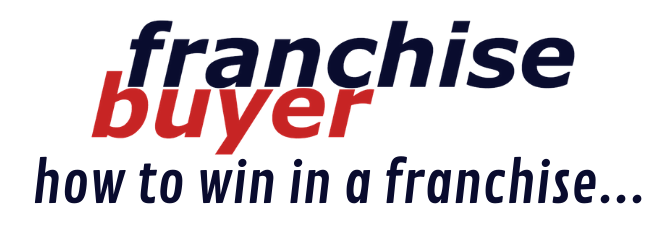
Transforming Australian retail, one experience at a time
Late last year, The Retail Doctor Group hosted a breakfast in Melbourne diving into ‘The Transformation of Australian Retail’; how iconic brands like Myer are changing their strategy and focus to bring the love of shopping to life and lift the customer service experience.
Late last year, The Retail Doctor Group hosted a breakfast in Melbourne diving into ‘The Transformation of Australian Retail’; how iconic brands like Myer are changing their strategy and focus to bring the love of shopping to life and lift the customer service experience.


Keynote speaker, Myer CEO Richard Umbers advised, “the definition of the word transforming is: the model of how you make money fundamentally changes.” His belief of needing to be “customer centric” and hone your differentiation, is mirrored by Retail Doctor Group CEO and Founder, Brian Walker – who also spoke alongside RedSeed Training (retail), CEO & Founder Anya Anderson about the speed of change and digitisation of retail processes.
Building a retail ecosystem, is now more reliant on an experiential platform, however, customer service is still crucial for businesses to get right.
We spoke to Brian and Anya to gain their insights post-event.
How do you empower employees to believe in providing consistent customer service?
Anya: With an increasing number of the retail workforce being the Millennial Generation, it's important to understand what they need in order to feel successful in their role. Now, more than ever, employees are looking for purpose in their role.
So, it's not surprising that Gallup found in a recent survey that 87% of millennials say that professional development or career growth opportunities are very important to them in a job.
In a way, this is perfect, because this generation is seeking education on how they can be better at what they do. So, tying this need to a robust and engaging training programme is your best bet at empowering them to believe in providing an exceptional customer experience.
Here's a few things to consider about the training you deliver:
• Modules need to be short and engaging (i.e. video, interactive tools)
• They need to be relevant to their role
• There needs to be a skill progression
• It should have a clear 'learning pathway'
• Learning pathways need to be flexible for each trainee
Brian: Everything really starts to emanate from the leadership of the organisation. A lot of organisations will talk about customer centric behaviour. They’ll talk about the importance of the customer but, then their actions will either be product or process focused, where their behaviours will often dictate to employee’s product issues or process issues as more important.
So, invariably what we find is organisations that actually do talk and believe in the customer are organisations where the CEO will talk to staff members about customer experience, they will rate customer feedback, they’ll have customer service as a metric in their business – a rated metric in their business – either by NPS (Net Promoter Score) or, mystery shopping or some form of giving the customer a voice in the business.
They make heroes of their staff who provide heroic customer service and it will feature in much of their day-to-day work, from building their strategy around customers and their understanding; right down to store design, treatment, training and staff conversations.
They’ll provide open feedback and communications for staff members to broach better ways – more innovative ways – to providing better customer service experiences, and that can be as simple as reducing processes from delivery of product. That’s really the foundation of this topic of empowering employees.
Hiring also really implies having a good open culture, communication and in this case: talking to and getting feedback and believing in a customer-focused organisation.
At the foundation level, it is right down to customer centricity to being in the recruitment checklist, induction, recognition and incentives – all around providing outstanding customer service and on some level, valuing the relationship with the customers more so than the short-term transactional sales.
When it comes to customer complaints, how crucial is proactivity in resolving issues?
Anya: We live in a 'now' society. This means that the quicker you can get things done, the better. This extends to every aspect of retail, how soon you can deliver an order, how soon you respond to an online enquiry, how quickly you acknowledge a customer who enters your store, how fast you can process a transaction. Resolving complaints are no exception.
We all know that the cost of customer acquisition is much higher than the cost of customer retention so, as retailers, it's in our best interests to be proactive in resolving customer complaints.
Brian: It is critical. When we talk about customer service, really, ultimately, expectation and experience equals the level of service.
If the customer has a predetermined expectation from the way the brand and stores present themselves – the experience or expectation is not up to standard – customers invariably have huge social media tools now and social opinion, in which to broach their way. [They] can rate them and exponentially at a much more inflated rate; inflict brand damage on poor customer service.
So, it is important; in fact, it is critical, should an issue arise [that] expectation hasn’t met experience, that a staff member – and depending on the level of damage if you like or the problem – can escalate it more quickly into senior roles. It is important to deal with it proactively; to ensure the adage of ‘the customer is always right’ is reasonably adhered to and that the matter is resolved quickly and to the customer’s satisfaction.
The organisation takes that experience into its internal memory, if you like, so that it learns from it.
Why do e-commerce platforms need to ensure their end-to-end online sales process is robust and offers a seamless user experience?
Anya: E-commerce has been around for a while now, and customers are beginning to expect more and more from online brands when it comes to the end-to-end process. The more comfortable consumers become with something, the more comfortable they feel voicing their opinions (positive or otherwise).
Moreover, for bricks-and-mortar retailers who also have online stores, it's important that the service they're providing online, matches the service they're providing in-store.
Bricks-and-mortar retail has had hundreds of years to perfect the art of the in-store experience, online stores need to do this exponentially faster.
Brian: These days we talk more and more about this idea of a retail ecosystem, more omni-channels. So, whether it is virtual processes or whether it is in-store, the customer needs to have a support mechanism around them or a communication mechanism around them that allows any customer service issue to be resolved quickly and proactively.
[It] allows customer service feedback all the way along the loop and ensures that whatever the promise was made by the retailer or franchisor/franchisee in this case, is delivered upon.
So, it is about framing and setting expectations and then it is about keeping this continuous loop back in the process.
There’s some really simple rules around customer service and first of all:
- Always employ the will and teach the skill is number one. You always want people who like dealing with people to be working with customers. It is fundamental, but it is true.
- Try to create customer focus and centricity into your organisation no matter how big or small. In a way that we’ve talked about.
- Certainly, reward staff for exceptional customer service, keep the customers voice as close as you can to the business. Either by measuring performance or by watching the ratings on social media, making sure your customers are happy.
- And it is the old saying too: ‘it is important to keep the morale, productivity of your staff up.’ Happy staff equals happy customers.





